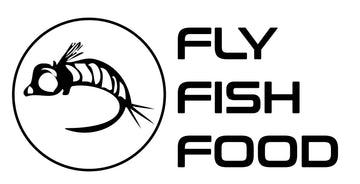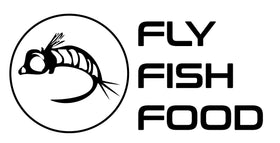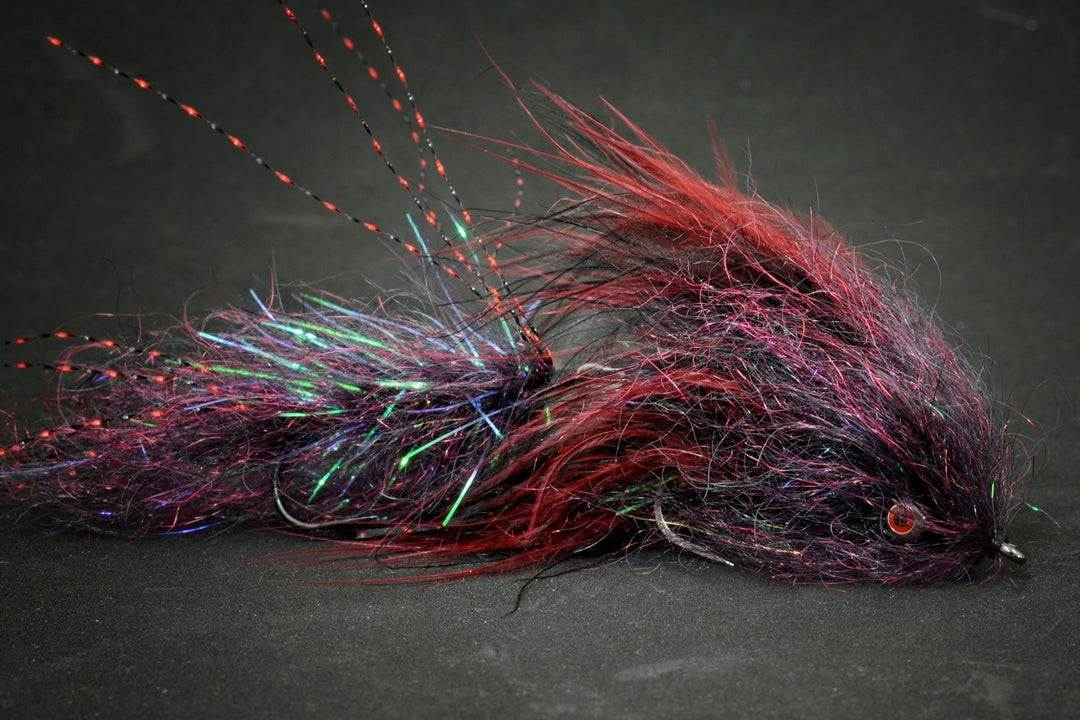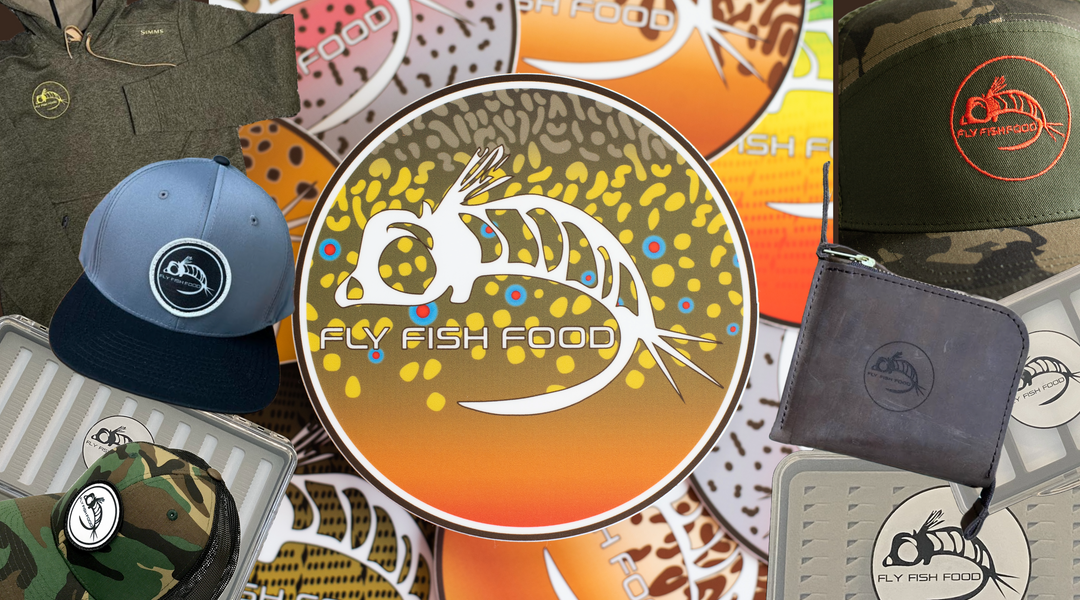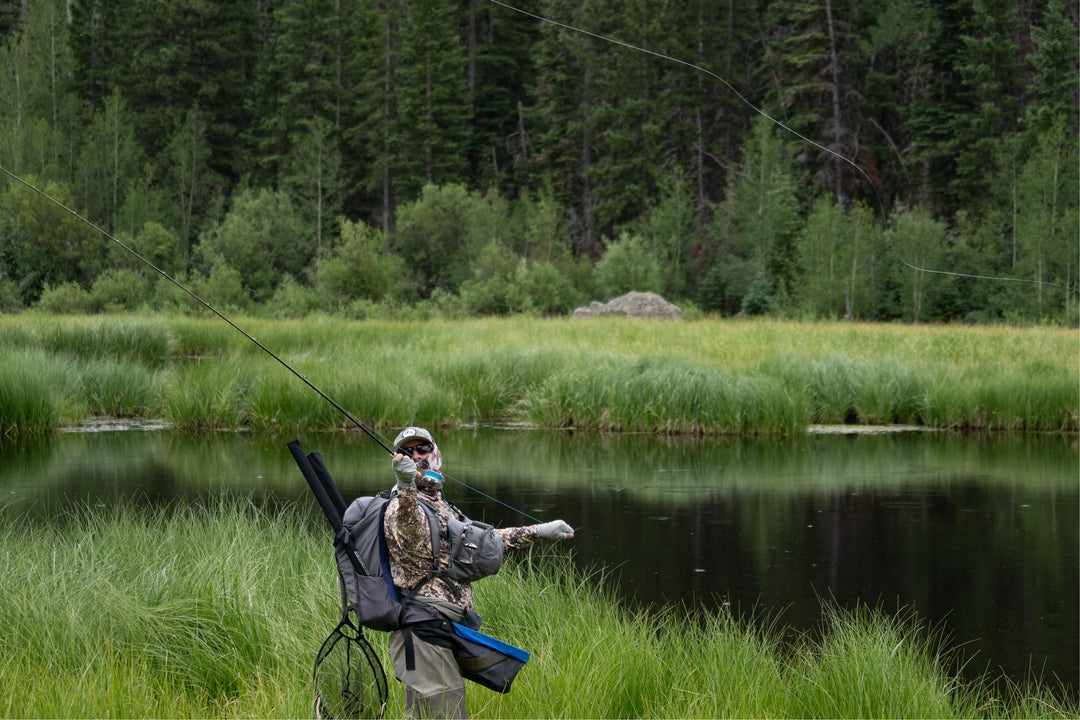UV Resin Shootout
Cheech - October, 2015

Disclaimer! Before I jump into this post, I just want to be clear that most of these resins that I tested are VERY GOOD. The differences between a high score and a low score are very very small. Also, you can create your own ratings based on what you think are the most important attributes of resin. This being said, we tie everything from tiny midges to huge sailfish flies, and we have used resin in most of these applications. Based on our experiences on the tying bench and through these tests, we have come to these conclusions.
There is nothing quite like a good disclaimer to start out a post right??? Light cured resins... While they have been around for many years, they have become more and more mainstream in the past little while, and I think that a lot of companies are starting to crack the code to make very quality products. I remember the first time I saw flies with very elaborate epoxy work, and the first thing I thought was how much of a pain it would be to tie those in any quantity. I found out that the tier had been using Loon Wader Repair to make the heads, so I was intrigued enough to go buy a tube of it to try for myself. It was hard to get the desired results with Loon Wader Repair or Loon Knot Sense (mostly because of user error and high tack,) so the UV resin flame kind of dwindled until Curtis showed me some Clear Cure Goo. It seemed like the big battle back then was with "tack," and pretty much every resin on the market had a sticky film (or so I thought.) Since then, UV cure resins have become more and more mainstream, and it seems like a lot of different companies have emerged with a "be-all end-all" product that is so much better than anything out there. With so many claims of resins being superior to all the "other" brands, we decided that it was time for an apples to apples comparison, and not to declare a winner, but to show strengths and weaknesses of each resin so the consumer could make a decision for him-or-her-self.
I started out by researching most of the conventional products in the fly tying world, and also reaching into some other industries to find products that could carry over to tying. I also wanted to take the scientific element out of this test for the most part because, shocker, I'm not a scientist! This test is designed to be useful for an average Joe Fly Tyer who just wants to know if and how these products work. I'm not going to go too deep into nanometers, lumens, or chemical reactions in this test because I frankly don't understand all of that mumbo jumbo. What I can do is rate these resins on several different fields to give the end user an apples to apples comparison. If I shine a light on the resin and it hardens, it "works." That's all 90% of tyers want anyway... a product that works.
UV LIGHTS
As I began the study, I was in the process of researching lights pretty deeply, and there was so much information out there that I ditched the research... If a flashlight put out purplish looking light, I'd try it in my experiment. This was perhaps the most eye opening part of this study because I was worried about spending so much money to get each manufacturer's light to get the resins to cure. What I found is that it was much harder finding a light that wouldn't cure the resins, than it was to find a light that would cure the resin to the manufacturer's expectations. In fact, all of the "purplish" emitting lights that I have for this test can cure all of the resins. The only kicker to all of this is that if a light was more powerful (in regards to wattage) it would cure the resin faster. If there was tack left on the resin... It was because of the resin - not the light. That's right... Tack is due to the chemical reaction that's going on in the resin, and no amount of exposure to the UV light will take the tack away. that means that the $7 light I bought from amazon would cure the resin the same as the $50 manufacturer's lights, but it would take longer because the wattage was lower. This being said, I really do prefer a nice light in order to cure a thick glob of resin quickly.
TACK
Tack seems to be a very hotly contested "issue" of UV cure resins, but is it really that big of a deal? I used to think it was a much bigger deal, but it is easily overcome with either rubbing alcohol (i prefer hand sanitizer) or clear nail polish, and in my opinion, it is only one of the factors that you should consider when you are making a resin buying decision. For example: Would you rather use a resin that is rock solid and durable but stays tacky (until you treat with polish or alcohol), or a resin that cures tack free, but stinks to high heaven, turns brown in direct sunlight, and shatters the first time it hits a rock? Sure I like tack free resin a lot, but it's not the be-all end-all of resins. (Keep in mind that the "tack" test and the "durability" tests were weighted twice as heavily because I value those things the most in a resin.) Also, in case anybody was wondering, I tested tack by curing a glob of resin on a piece of paper, then I pressed a piece of marabou on it, then I turned it upside down to see if the marabou would stick. High tack resins would retain the piece of marabou for a few seconds, and the low tack or no tack resins wouldn't retain the marabou at all.
TESTS
Test #1 - Cure each resin with 10 different lights. I gave each resin a burst of light for 5 seconds and noted the percentage that it was cured. Then I gave it a burst at 10 seconds, and if it was not cured in 10 seconds I would blast the resin with the light until I got a full cure. There is a PDF (link here) that you can download with all the nerdy details, but like I said above, pretty much any light I used would cure the resin.
Result Highlights:
The lights that stood out to me were the Loon Mega light, the Clear Cure Goo Pro Plus Light, and the Ultrafire 501-b light I bought on Amazon. They cured all resins within 5 to 7 seconds. I lean lightly toward the Loon light because it uses AA batteries (more accessible), and the other lights use the more expensive CR123 batteries. This being said, I was able to find a rechargeable battery for the Ultrafire light on Amazon for about $10 (and it also works in the Clear Cure Goo Pro Plus light)... The surprise of the bunch was the Bondic light. That little thing was AWESOME because it cured the resins so well. I really didn't get a feel for how long the battery would last, and I hated the on/off switch, but it could make for a viable travel option. Interestingly enough, the knock off key fob light that was nearly identical to the Bondic light sucked sucked sucked sucked sucked... Yeah. It was bad. It's important to consider that it's NOT about nanometers or any of that other BS. Buy a powerful light and cure to your heart's content. If I were starting out on a budget and wanted the most cost effective option I'd buy the Ultrafire 501-b light and the rechargeable battery. There are TONS of options... Go to Amazon and search for UV Flashlight.
Test #2 - Examine heat, tack, odor, applicator, and durability. I cured each resin and took note of the heat, tack, odor, applicator, and durability. I think tack and durability are much more important than most of the other attributes so I weighted those scores twice as heavily. This being said, tack can easily be overcome, so in fairness, durability should be the ultimate test. I still decided to weight them equally because tack is a major emphasis in the industry.
NOTE: the pricing is "Per Oz" not per bottle/container. Obviously "Per Oz" is the best way to judge value, so we used that number to standardize the comparisons. Also... Silver Creek resins are named "Flexthin," and "Crystal UV Cure."
The first thing that you might notice is that we didn't consider the price in the scoring at all. We listed it to maybe help you make a decision if you are trying to save some money, but we also know that you probably wouldn't use a really bad resin even if it were next to free. Also, for some people, an extra $20 here and there isn't really a big deal at all. I also thought that it was important to highlight the top resins based on viscosity. Truly thin resins can be used as head cement, coatings for wingcases, or to put a top coat over a tacky resin. Medium resins are pretty versatile in making visible coatings that still soak in a bit. Thick resins are used for building up bulk in a big musky fly head for example. All viscosities of resin are useful and important.
Other Notes:
Deer Creek Resins: I really liked the Deer Creek resins because they are spot on when they say that they cure tack free. I thought they would score very highly, but they didn't do very well in the durability testing (except for the flex). It was interesting to note that most resins that cured 100% tack free were also pretty prone to shattering. I also found the applicator options to be super limited. All this being said, I like the Deer Creek stuff, and I could probably find myself using it.
Solarez Resins: I had never really worked with Solarez before, but they have been in the UV cure game for a long long time. Overall, I was really impressed with their resins because of the price, and how well they performed. I bought the smallest sizes available, and I hated the metal squeeze tube applicator that they have, so if you buy it, spend just a bit more for a 2 oz bottle that comes with a better applicator.
Silver Creek Resins: This is kind of the black market resin of all the resins. I found out about it through Curtis first, and then through www.flytyingforum.com. The creator of it is a chemical engineer who came up with the ultimate formula for creating a tack free resin. Well... It is tack free, but it has major issues with durability, smell, and heat. I tried it on many different surfaces, and it would bubble up quite a bit, so I'd have to cure it in short exposures to make up for it (which really isn't the end of the world). You will also see that it didn't do well at all in the "dash of my car" test below.
Loon Resins: I will disclose that I'm an ambassador for Loon, but I told the owners that I was going to do a test and their resins would be right in the mix for good or bad. I didn't hold anything back on them. For most of their resins, you will see that they didn't score very well regarding tack (except for flow), but they scored exceptionally well in most everything else. The applicators are what I really like about the Loon resins because you can use all different diameters, or use a brush depending on what you want to do. Also, the smell of Loon resins is almost non-existent, and I think it's due to them being so conscious about the environment, a trait that only they have as a resin company. I got a bunch of MSDS sheets for these products, and the long and the short of it was that most of the resins looked pretty scary chemically compared to Loon.
Tuffleye: I had heard about Tuffleye from many people because they claim to be the best because they use "blue" light that is somehow better than using UV light. Through looking at their products and reading their material, I realized that they expect their product to cure very hard, and with tack that can be removed with a product they call "top coat." The top coat is very similar to a clear nail polish, but they claim that it prevents yellowing. At no point do they claim to make a tack free product. I decided to try it with my "UV" lights first, and if I had any issues, I'd buy their "blue" light. Guess what? The normal old UV lights worked wonders on Tuffleye and cured it hard as a rock... with a tacky surface. Exactly how the manufacturer said it would cure... but only with a "blue" light. Like I said before, it's good just like the majority of the resins on this list.
Test #3 - Durability test. How much damage would a resin endure if it were smacked on a rock? We rigged a hammer to fall from the same height each time to see how much damage it would do to a glob of resin. Yes, this is probably a bit more force than most flies will go through, but we wanted to torture test them. Some are cracked, some are shattered, and some look like they have been sitting on the couch all day eating chips and salsa like Curtis. Not a scratch on them.
Test #4 - Dash of my car test. I cured a bunch of globs of resin on a piece of paper and put them on the dash of my car for 24 hours. Some of the resins really discolored badly, some yellowed a bit, and some stayed crystal clear. See for yourself which resins did the best. I also was worried that the paper might be creating some type of reaction with the resins, so I tried it again on clear plastic bags and the result was identical. I think I was missing a couple resins when I did this, but most of them are there.
Test #5 - Flex Factor. There are several resins that are marketed as "Flex" resins denoting that they remain flexible after they have been cured. This is intriguing to me because They could make for some cool moving parts to a fly. I found that the most accurate and scientific way to rate them is to give them gummy candy ratings. Are they squishy like a brand new Kellogg's fruit snack, or are they "squishy" like a haribo gummy bear that has been out of it's package for a year? Before you read this, go to the store and buy some Kellogg's fruit snacks, and then go buy some Haribo gummy bears. Consume them all in one sitting while taking notes.
CCG Flex - This was probably the most consistent of the bunch, but it's flexibility was that of a haribo gummy bear right out of the package. Yes, flexible, but not enough for water to make it move.
Deer Creek Flex - This is one of the resins that people said that I absolutely had to have. Well, it's the best of the Deer Creek resins, but not because of the flex. It's the best of their offerings because it's much more durable than the other two. It's gummy rating is that of a Haribo bear that found it's way out of the package for a few weeks. Does it flex? Yes. But much less than the CCG product. The crazy thing is that Loon flow was actually more flexible than this product.
Solarez Flex - This resin was also very durable, but the flex was somewhat minimal. It's also a Haribo bear that is weeks away from fresh packaging. The positive side of this resin is that it's much cheaper than all other "flex" resins.
Tuffleye Flex - This resin is actually very flexible! If you were going to incorporate a resin based fly that absolutely had to have movement, this would be your resin. It's as soft as Kellogg's fruit snacks that are still warm and on the conveyor belt in the factory getting ready to be packaged. I was intrigued by this resin even though it was by far the tackiest resin I used. A little rubbing alcohol took care if it though.
My thoughts on flex resin are that they are pretty cool in theory, but they aren't really flexible enough in the water to make a difference. They are super durable because they squish a bit when they get hit, but if you want something that wiggles like a bass plastic worm, I'd recommend just getting the plastic worm.
Conclusion:
My conclusion is that most of the mainstream resins are very good, and it almost boils down to personal preference when determining a "best" resin to use. If you are starting out with resin, make a list of what is important to you, and perhaps you can use my data to help you make a decision. All in all, this was a fun experiment that I dumped waaaaay too many hours and late nights into, and at least now I have a healthy collection of lights and resins to play with.
~ Cheech
